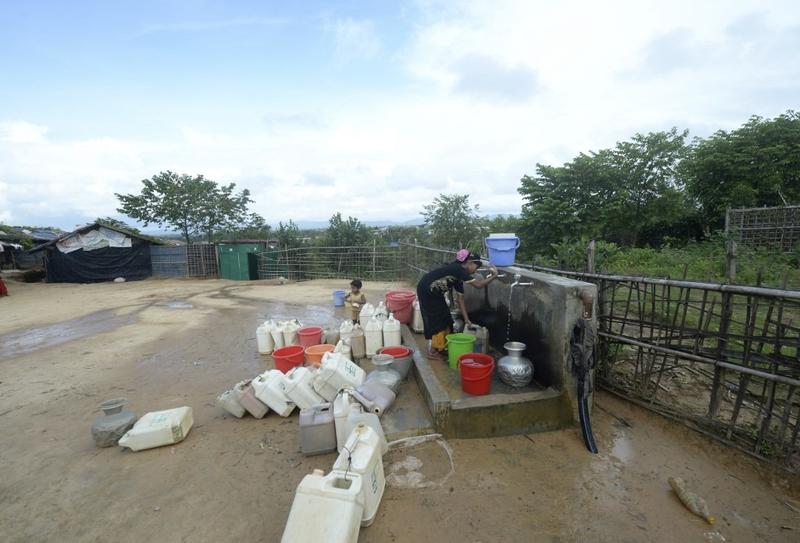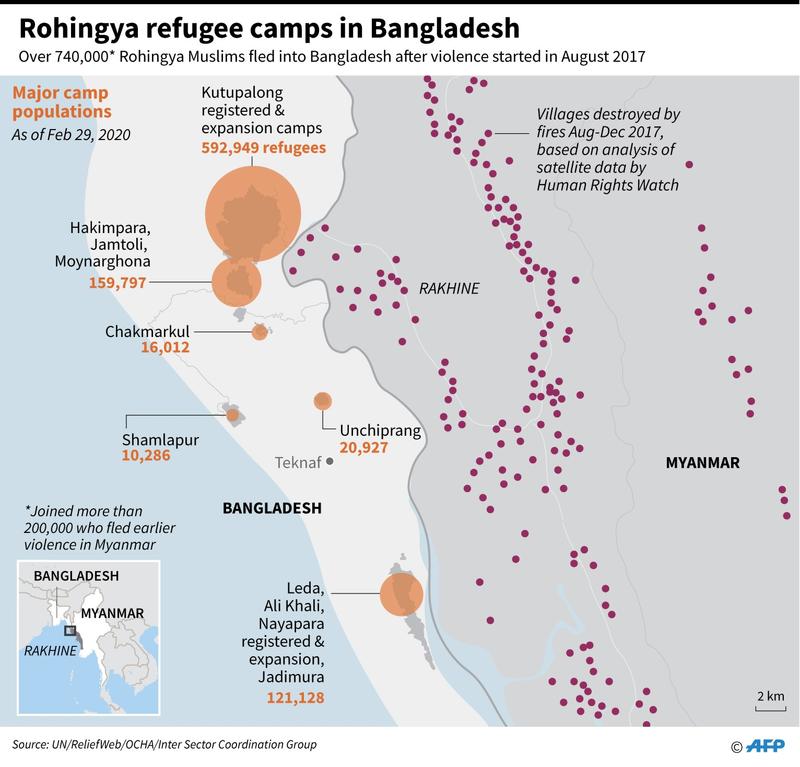 A Rohingya youth collects drinking water in Jamtoli refugee camp, near Ukhia on August 23, 2020. (PHOTO / AFP)
A Rohingya youth collects drinking water in Jamtoli refugee camp, near Ukhia on August 23, 2020. (PHOTO / AFP)
Carrying bundles of belongings and often barefoot, they trekked for days over western Myanmar’s monsoon-drenched mountains, before fording the Naf River into Bangladesh. Many braved sea crossings in rickety, overloaded boats.
It has been three years since the mass exodus of more than 730,000 Rohingya from Myanmar’s Rakhine State following sweeping military retaliation to attacks by Rohingya insurgents on police posts and an army base on Aug 25, 2017.
UN investigators later concluded the Myanmar military campaign was executed with “genocidal intent”. Myanmar denies that, saying the army was battling the insurgency.
Between the refugee camps already established on the border and the coastal villages, more than 18,000 people arrived in the first five days of the crisis from Aug. 25, with the number rising by the day
Mass exodus
The scale of the unfolding refugee crisis with hundreds of thousands coming across the border every day was illustrated with this graphic. Between the refugee camps already established on the border and the coastal villages, more than 18,000 people arrived in the first five days of the crisis from Aug. 25, with the number rising by the day.
READ MORE: Missing Rohingya refugees found alive on Malaysian islet
A desperate escape
As the crisis unfolded, Reuters was on the ground, walking with refugees as they arrived exhausted in Bangladesh, and on the shore as boats came in.
Three years after the crisis began, hundreds of thousands of Rohingya refugees remain in camps in Bangladesh.
ALSO READ: Malaysian court to hear bid to set aside caning for Rohingya refugees



